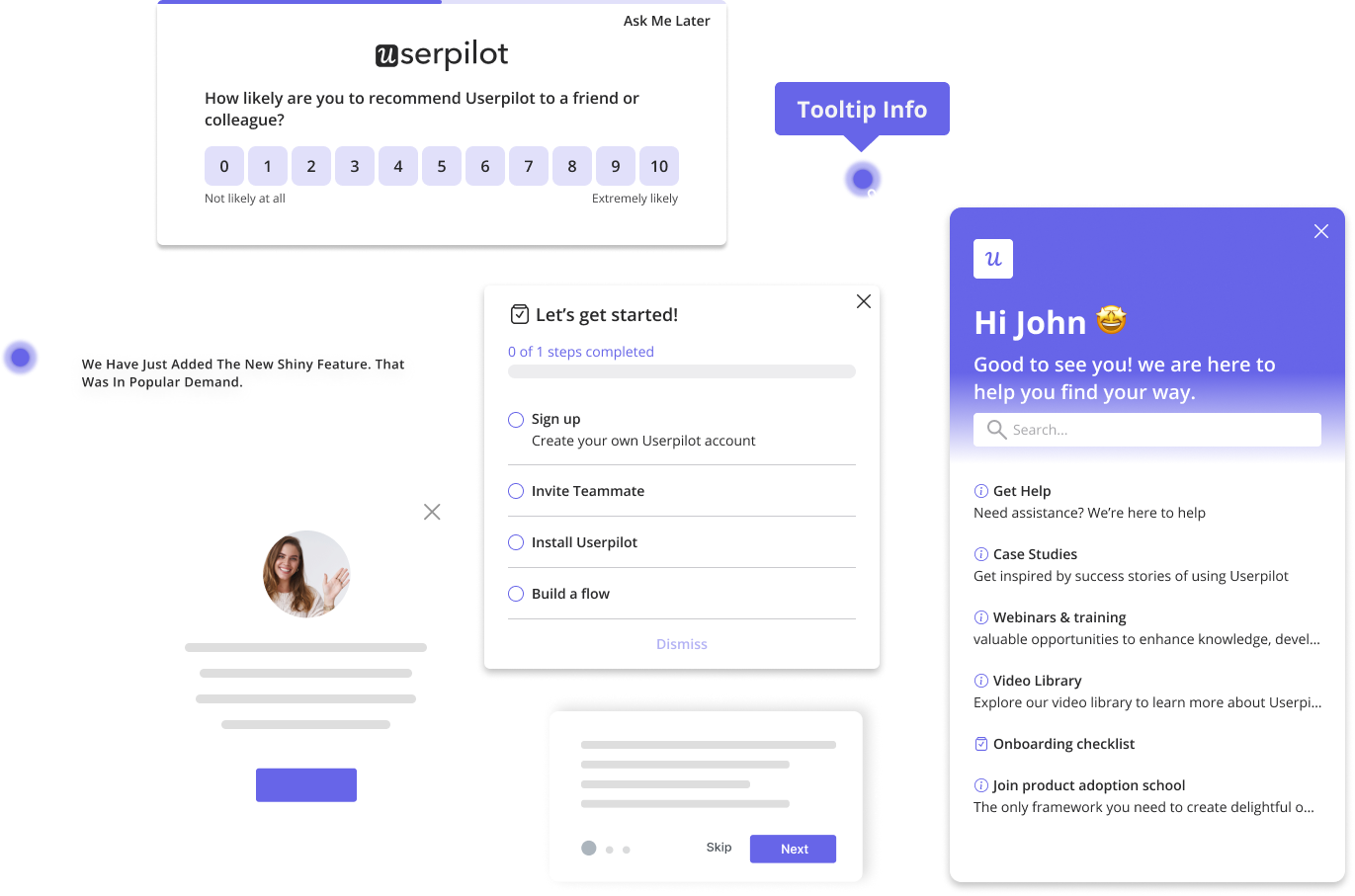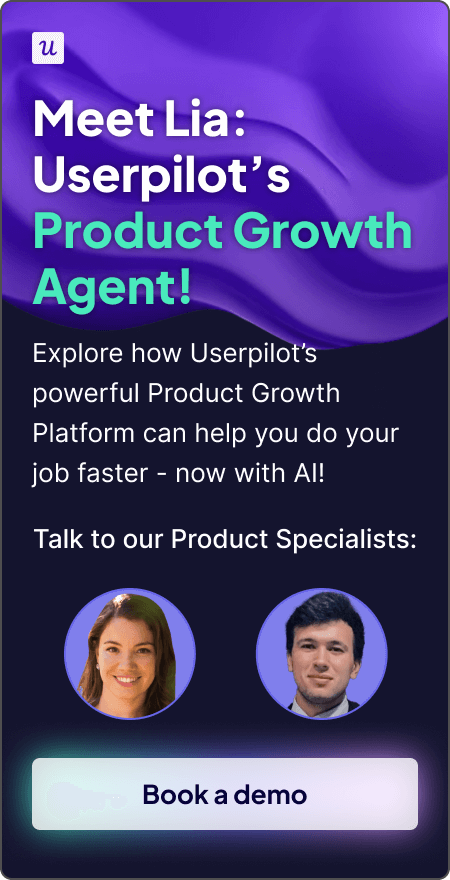How to Turn Free Users into Paying Customers with a Strategic Omnichannel Communication
At Userpilot, my role as Director of Customer Success gives me a front-row seat to how companies grow. Since 2018, we’ve expanded from building an onboarding tool for startups to offering a full suite of product-led growth solutions for mid-market and enterprise accounts. I’ve seen firsthand that this level of growth and retention doesn’t just come from having an excellent product. It comes from understanding your users deeply and communicating with them in a way that feels natural, helpful, and seamless across every touchpoint.
If you’re running a freemium model or offering free trials, getting users to commit is your golden ticket. The modern customer bounces between email, social media, in-app messages, and live chat daily. They expect you to keep up, wherever they are. If you don’t connect these dots, you lose out. This isn’t just about having multiple channels; it’s about making them work together as one cohesive experience.
Let’s dive into what omnichannel communication truly means and how you can use it to turn your free users into loyal, paying customers.
Try Userpilot Now
See Why 1,000+ Teams Choose Userpilot
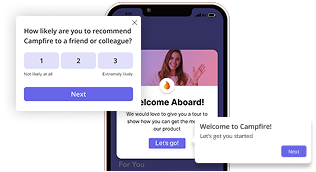
What is omnichannel communication?
You might hear “omnichannel” and “multichannel” used interchangeably, but there’s a big difference. Think of it this way: multichannel is like having a bunch of separate roads leading to your business. Each road (email, social, in-app) is its own journey, with its own start and end point. The customer has options, but their experience can feel disjointed as they switch.
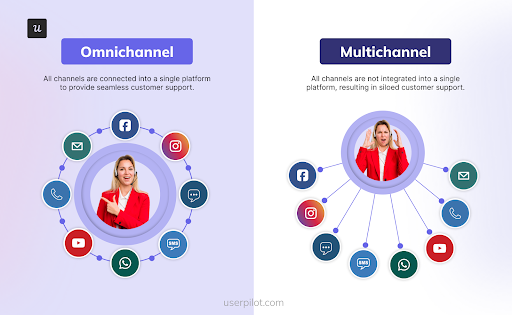
Omnichannel, on the other hand, is like a fluid, interconnected network of paths. A conversation that starts in an email can smoothly move to a live chat within your product, and then to a push notification. The key is that the context of the interaction carries over. This approach unifies all your communication channels to deliver a consistent brand voice and a coherent customer experience. It’s all about putting the customer at the center, creating a single, continuous journey for them.
How to use omnichannel to drive freemium conversion
When you offer a free product or a trial, you’re inviting users to test the waters. Your job is to show them enough value to make them want to dive deeper and pay. Omnichannel communication helps you do this by creating a highly personalized and engaging experience that nurtures free users toward conversion.
Build trust and credibility
Imagine a user trying your free tool. They sign up, poke around, and maybe complete one small task.
If they get stuck, they might open a chat. If that chat agent knows their in-app history, that’s powerful. This consistent, informed experience across customer journey touchpoints builds trust. It shows you know them and value their time, even as a free user.
Offering sample assessments, mini-courses, or limited feature access through different channels allows potential customers to gauge the quality of your offerings without risk. This builds confidence, a critical step for converting to paid.
Deliver personalized communications
With an omnichannel setup, you can gather user behavior analytics from every interaction. This rich data lets you understand their needs and tailor your messages precisely.
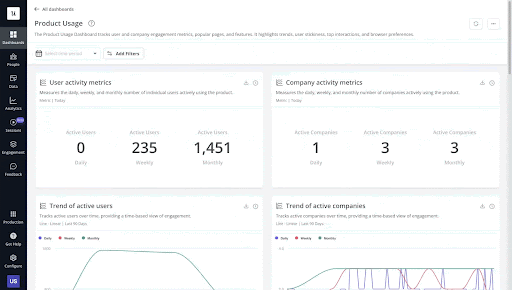
For example, if a user spends a lot of time on a specific feature in your free plan, you can trigger an in-app message or an email offering a personalized walkthrough of the premium version of that feature. This relevance makes your communication feel like a helpful guide, not just a sales pitch, directly impacting your customer satisfaction and loyalty.
Increase engagement and reduce friction
Customers today want to connect on their terms. If they prefer social media, be there. If they prefer live chat for quick questions, offer it seamlessly. By empowering users to choose their preferred channel, you naturally boost user engagement.
When a user has a question, they shouldn’t have to repeat their issue if they switch from your self-service support to a human agent. Omnichannel systems help resolve issues faster, minimizing user friction and improving their overall experience with your product.
How to build your omnichannel conversion strategy
Ready to start turning those free users into paying customers? Here’s a practical roadmap based on what I’ve learned that helps most businesses succeed.
1. Identify your communication channels
First, list every place you currently interact with customers: your website, email, social media platforms, in-app messaging, live chat, push notifications, and even offline methods if applicable.
Once you have this list, dig into each one:
- Who uses it?
- What do they talk about there?
- How do they like to be spoken to?
Understanding these nuances helps you tailor your approach while maintaining a consistent core.
2. Craft a consistent brand voice
Your brand voice is your company’s personality. Whether a user is reading your blog, getting an onboarding email, or seeing an in-app message, it should feel like it comes from the same place.
This doesn’t mean every message is identical, but the tone, language, and core values should shine through. A strong, consistent voice builds familiarity and trust, making users more comfortable moving between your channels.
3. Collect and use customer data for personalization
This is where the magic happens. To truly personalize experiences and encourage free-to-paid conversion, you need solid customer data. I rely heavily on 2 main sources:
- In-app analytics: This tells you what users do inside your product: which features they use most, where they get stuck, their overall product usage. Tools like Userpilot track every interaction, giving you a clear picture of their journey.
- Surveys: Want to know why someone signed up, or how they feel about your product? Ask them. I use welcome surveys to understand user goals from day one and NPS surveys to gauge satisfaction. These in-app surveys are goldmines for customer insights.
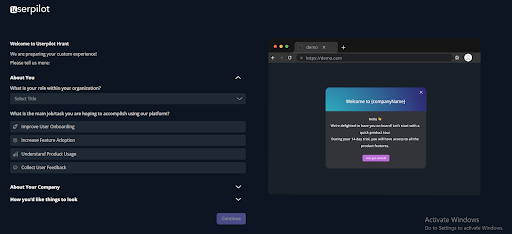
Once you have this data, use it to segment customers. You can then trigger personalized messages, offer specific interactive guides, or even tailor a personalized onboarding experience based on their actions and needs. This contextual approach is key to moving users through the funnel.
4. Deliver timely and contextual communication
Users often sign up for a free account because they have an immediate need. If they run into a wall, they expect quick help. Delay is a conversion killer. An omnichannel strategy allows you to respond quickly and provide help in the right place at the right time.
For example, if a user struggles with a specific feature, an in-app guide or a targeted chatbot can offer instant support, preventing frustration and reducing support tickets.
Building a comprehensive resource center within your product also gives users the power of self-service, resolving issues before they become bigger problems. This proactive approach improves the customer experience dramatically.
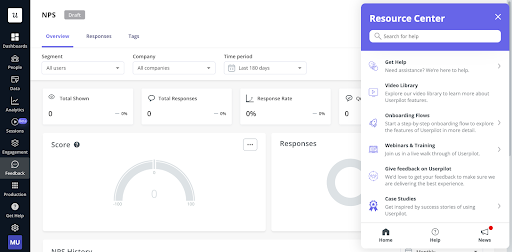
5. Set clear conversion goals and KPIs
For your omnichannel strategy to work, you need to know what success looks like. Different channels will serve different purposes.
For instance, social media might be about awareness and initial customer acquisition, while in-app messaging and email are crucial for driving feature engagement and converting to paid.
Define key performance indicators (KPIs) for each channel and for your overall freemium-to-premium conversion rate. This helps your team focus and measure their impact.
Userpilot’s role in your omnichannel strategy
At Userpilot, we’ve built our platform to help you unify your customer communication and drive growth at every stage of the user journey, making it a powerful tool for your freemium-to-premium strategy.
- Contextual Engagement: Our platform enables you to send highly contextual in-app messages, product tours, and interactive walkthroughs exactly when and where users need them. This ensures your communication is always relevant.
- Data-Driven Personalization: We help you collect real-time user behavior data and create user segments. This means you can trigger specific email campaigns based on in-app actions, like a user completing a free module or getting stuck on a key step, nudging them towards premium features. For example, you can integrate Userpilot with CRM tools like HubSpot to sync data and create hyper-targeted email campaigns.
- Effortless Feedback Collection: Launch targeted in-app surveys like welcome surveys or NPS surveys to gather feedback right inside your product. This direct feedback helps you understand user needs and pain points, informing your conversion efforts.
- Automated Support: Build comprehensive resource centers with articles, videos, and interactive guides, reducing the load on your support team and empowering users to help themselves.
We’ve seen how companies like Kontentino use Userpilot to boost new user activation and how Smoobu improved conversions. It’s about providing value, understanding your users, and communicating with them strategically across all channels.

